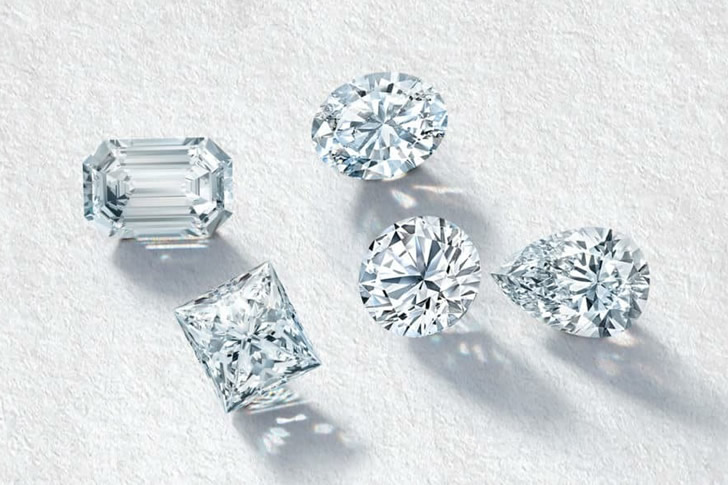Understanding Lab Diamonds Production Benefits And Buying Tips
Lab diamonds have experienced a surge in popularity, gaining traction as ethical and sustainable alternatives to traditionally mined diamonds. These synthetic gemstones are crafted through advanced technological processes that emulate the formation of natural diamonds. This comprehensive guide delves into the intricacies of lab diamonds, from their production methods to their unique advantages and key factors to consider when buying them.

Understanding Lab Diamonds: What They Are and How They’re Made
Lab diamonds, also referred to as synthetic diamonds, are created in a controlled laboratory environment that simulates the intense conditions required for natural diamond formation. Though made in a lab, these diamonds share the same chemical and physical properties as their naturally occurring counterparts, exhibiting similar optical brilliance, hardness, and crystal structure. This similarity makes lab diamonds an appealing choice for consumers seeking an ethical alternative without sacrificing the beauty and quality of a natural diamond.
The Science Behind Lab Diamond Production
The creation of lab diamonds involves two primary methods:
- High-Pressure High-Temperature (HPHT) Method: This approach involves applying extreme pressure and heat to carbon, mimicking the natural process of diamond formation within the Earth’s mantle. The intense conditions cause the carbon atoms to bond, forming a diamond crystal. The HPHT method is capable of producing high-quality diamonds with consistent color and clarity.
- Chemical Vapor Deposition (CVD) Method: In this process, carbon-rich gases are introduced into a vacuum chamber, where they are broken down, allowing carbon atoms to deposit onto a substrate. This layer-by-layer growth creates a diamond structure. The CVD method offers greater control over the diamond’s growth, allowing for more customization and unique shapes.
Both methods yield diamonds that are virtually indistinguishable from natural ones, even when examined by experienced gemologists. This technological innovation has opened the door to a new era of sustainable and ethically sourced diamonds.
The Benefits of Lab Diamonds: Ethical, Environmental, and Cost-Effective
Lab diamonds offer a range of benefits that contribute to their growing popularity. Here are some of the most compelling reasons why consumers are choosing lab-grown diamonds:
Ethical Sourcing and Reduced Environmental Impact
One of the primary motivations behind choosing lab diamonds is their ethical sourcing. Traditional diamond mining is often associated with conflict diamonds, which are sourced from regions with significant human rights violations and violent conflicts. Lab diamonds, on the other hand, are created in a controlled environment, eliminating the risk of contributing to unethical practices.
Additionally, the environmental impact of traditional diamond mining is significant. Mining operations can lead to deforestation, soil erosion, and water pollution. In contrast, lab-grown diamonds have a much lower environmental footprint, as they do not require extensive land excavation or the use of harmful chemicals.
Consistent Quality and Variety of Choices
Lab diamonds offer a high level of consistency in terms of color, clarity, and overall quality. Because they are produced in a controlled environment, the risk of natural imperfections is minimized, resulting in a product that meets stringent standards. This consistency allows consumers to select from a broader range of shapes, sizes, and colors, giving them more flexibility when choosing jewelry.
Cost-Effectiveness and Affordability
Lab diamonds are often more budget-friendly than natural diamonds. Although prices vary based on factors like carat, cut, color, and clarity, lab diamonds generally provide better value for money. This cost advantage has made them an attractive option for consumers seeking high-quality jewelry without the premium price tag associated with natural diamonds.
Key Considerations When Buying Lab Diamonds
While lab diamonds offer numerous benefits, it’s essential to consider several factors when purchasing them to ensure a satisfactory experience. Here are some key considerations to keep in mind:
Certification and Quality Assurance
Like natural diamonds, lab-grown diamonds should come with certification from reputable gemological organizations, such as the Gemological Institute of America (GIA) or the International Gemological Institute (IGI). These certifications provide assurance that the diamond’s characteristics, including carat, color, clarity, and cut, have been objectively evaluated and meet industry standards.
Jewelry Design and Setting
When purchasing lab-grown diamond rings or other jewelry, consider the design and setting that best suit your style. Popular choices for engagement rings include solitaires, halo settings, and three-stone rings. The design should complement the diamond’s brilliance and enhance its overall appearance. Collaborating with a reputable jeweler can help you find the perfect setting for your lab diamond.
Sales and Clearance Opportunities
Lab diamonds are often available at discounted prices through sales and clearance events. Reputable retailers may offer attractive deals on lab diamonds without compromising quality. It’s worth exploring these opportunities, especially when retailers have unsold lab diamonds that they wish to move from inventory.
Online Buying and Retailer Reputation
The convenience of online shopping has made it easier to find lab diamonds from reputable retailers. When purchasing online, ensure the retailer has a good reputation, provides certification, and has a transparent return policy. This helps you make an informed decision and ensures customer satisfaction.
Customization and Personalization
Many retailers offer customization options, allowing you to design your jewelry with lab-grown diamonds to create unique and personalized pieces. Customization can be an excellent way to express your style and create a one-of-a-kind piece that holds special meaning.
Conclusion
Lab diamonds represent a significant advancement in the jewelry industry, providing an ethical, sustainable, and cost-effective alternative to natural diamonds. With benefits such as ethical sourcing, reduced environmental impact, consistent quality, and greater affordability, these gemstones are a compelling choice for consumers. By considering factors like certification, jewelry design, sales offers, online buying, and customization, you can confidently choose the perfect lab-grown diamond jewelry that aligns with your style and values.







Recent Comments